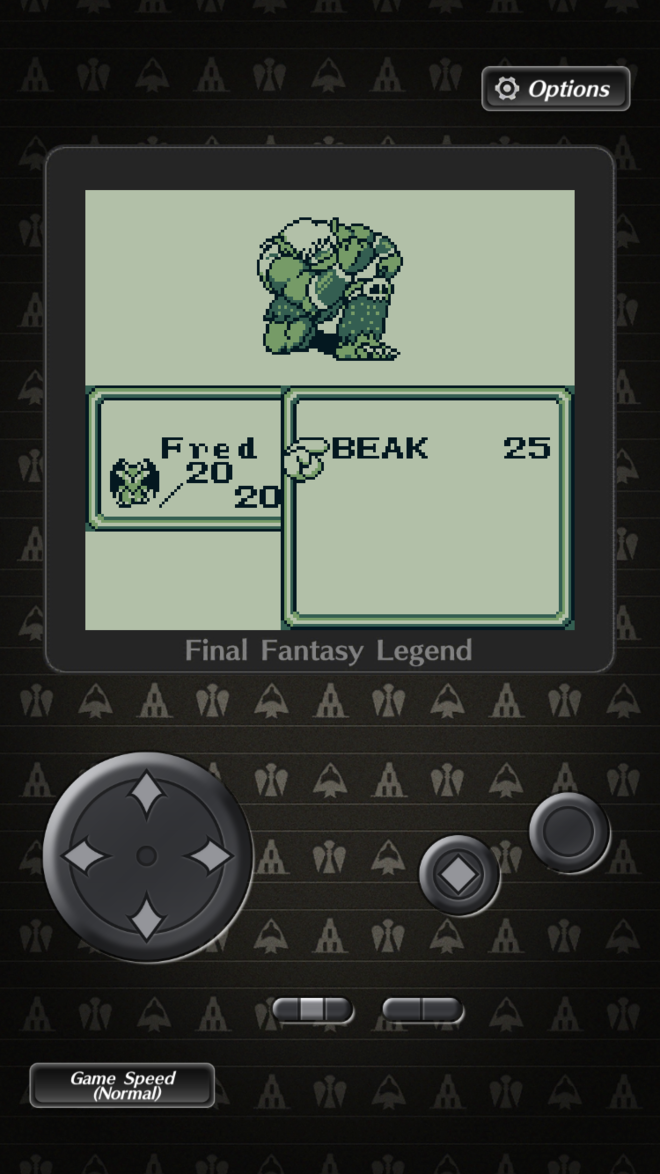The Final Fantasy series is hard to really map out without delving into a conspiracy-board-like assembly. The “mainline” games are the numbered entries, but even that is a simplistic statement as they stretch from simple console RPGs to Massively Multiplayer Online (MMO). Only a few are true ‘sequels’ in the traditional sense: Final Fantasy X led to Final Fantasy X-2 while Final Fantasy IV got a very long break before Final Fantasy IV: The After Years.
There’s also a massive number of remakes, ports, and compilations of the titles.
Then there’s spin-offs and only peripherally related games. I have a feeling if I continue this project I will have to focus an article on Final Fantasy Tactics and perhaps its two sequels. Beyond that there’s games with diverse play styles including dungeon crawlers, racing games, tower defense, fighting, rhythm, and more.
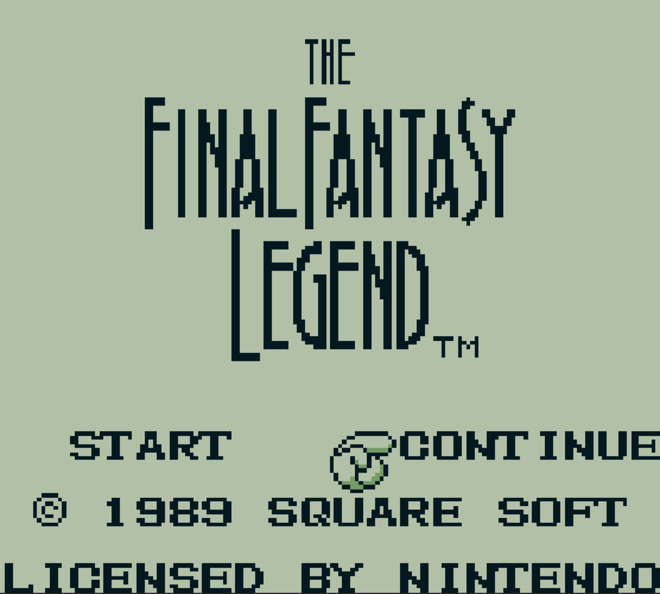
The game released in the United States in 1990 for the Nintendo Game Boy is not, really, part of this sprawling franchise. It was created by the same company but was meant to be part of a new series with its own tropes and concepts. While not as well known as it’s more popular cousin the SaGa franchise has had a long history spanning multiple platforms and really does deserve to be treated as its own unique thing.
The Tower #
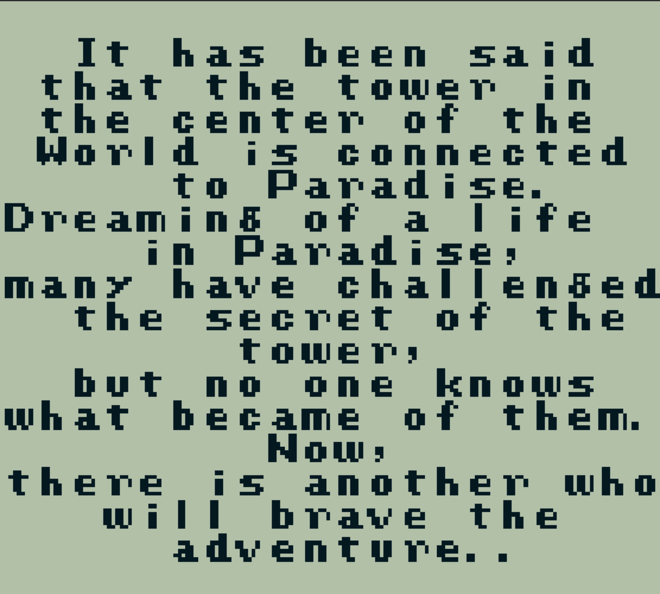
The ultimate goal of the game is clear from the intro screen: Explore the tower in search of Paradise. Storytellling is sparse, but generally well-used. The initial world to explore is a kind of generic fantasy with fetch-quest elements.
This progresses to a water-themed world, then a world based in clouds. The ‘cloud world’ increases with an actual storyline based on a mix of ‘rebels vs. oppressor’ tropes.
The post-apocalyptic world that comes next seemed like a huge change when I played the game when it was current. After the three previous worlds the newest one was a ruined city. I felt vulnerable due to a mechanic where the random encounters in the city featured the level’s boss in an invulnerable form. This meant that the motorcycle (reminiscent of Akira ) and clever use of subway tunnels was essential.
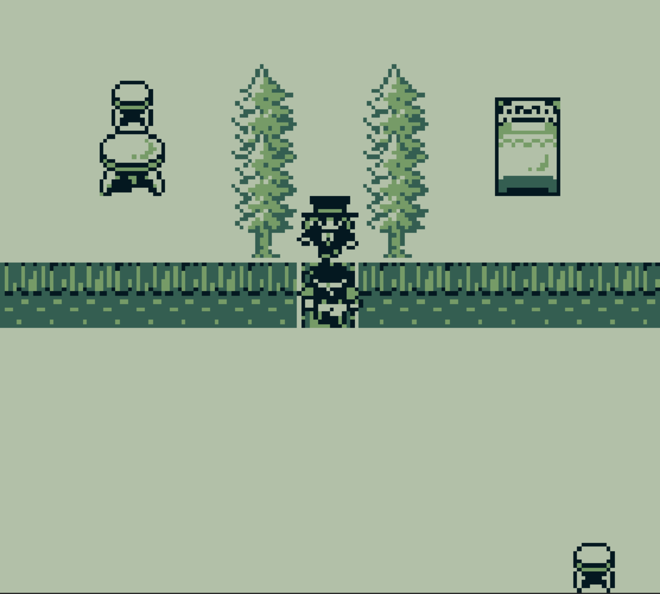
With that world’s crisis resolved, there’s a bit of drama, but the party reaches paradise and fights The Creator. The Big Idea is that The Creator apparently considers the world a toy and wants the drama of adventurers struggling to defeat villains in an endless cycle.
Mechanics #
Character creation is similarly pretty bare-bones. It reminds me a lot of the more ‘Western’ RPGs like The Bard’s Tale in which characters are created and ‘managed’ via in-game ‘shop’ interfaces. Characters are created by making a choice from several types:
-
Humans gain experience as they do things. They advance at a measured pace and are essentially the “no surprises” option. Humans can be developed by purchasing special items to increase their stats. Humans also have 8 Equipment slots, more than others. They come in Male and Female variants.
-
Mutants improve based on what they do in battles and have four of their equipment slots reserved for various special abilities. Due to the way they grow and develop they may have a powerful ability like an attack against all opponents, then suddenly swap it for a weak status effect that targets a single opponent. Like the Humans, they chose from male and female variants.
-
Monsters have a system based on eating ‘meat’ discovered after combats. Essentially, every time a Monster character eats meat they may become a different monster with new abilities. It’s possible to obtain a nearly top-tier monster very early with luck and grinding.
Characters have ‘Hearts’ that are lost when a character is resurrected. A character without a Hear cannot be resurrected. Late game, new hearts can be purchased, but at a high cost.
The system behind the game is nothing spectacular, but some interesting glitches are presumably the result of trying to fit a lot of systems into a small, limited platform like the original Game Boy. It’s a mix of glitches and things the designers figured people probably wouldn’t do. There’s a SAW item that, due to a flipped greater-than/less-than, is able to one-shot the last boss of the game.
Equipment is a major aspect of the game. One aspect that was disliked when the game was released is that nearly all weapons and other items have limited uses: A Sword might have 20 uses. With the limited equipment slots and storage the player must plan ahead. On my recent replay I found myself bringing cheap weapons with high use counts along with a stronger weapon in case of serious threats. The first world has a Sword with unlimited uses. It’s a quest item that must be turned in, but grinding with it seems perfectly reasonable.
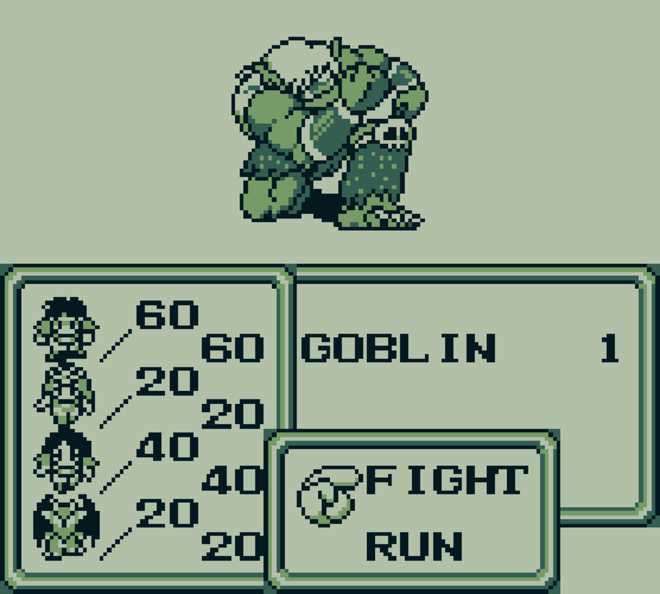
Combat looks like a mid-point between the early Final Fantasy games and the alter Pokemon games with a view facing the monsters. Only a few monsters can be seen at once, but the actual number involved can be higher.
Characters get a simple combat menu, selecting from limited options. Using equipment is a primary option, with a caveat that a Mutant or Monster character’s special abilities are kept in the character’s equipment screen. There’s no attempts to complicate combat with any of the later innovations games would add.
Memories #
I played the early worlds a few times. I never owned a Game Boy (at least until the GBA much later) but a friend did: I played through the first world while unable to save as we worked together to try and find the path through the Tower levels.
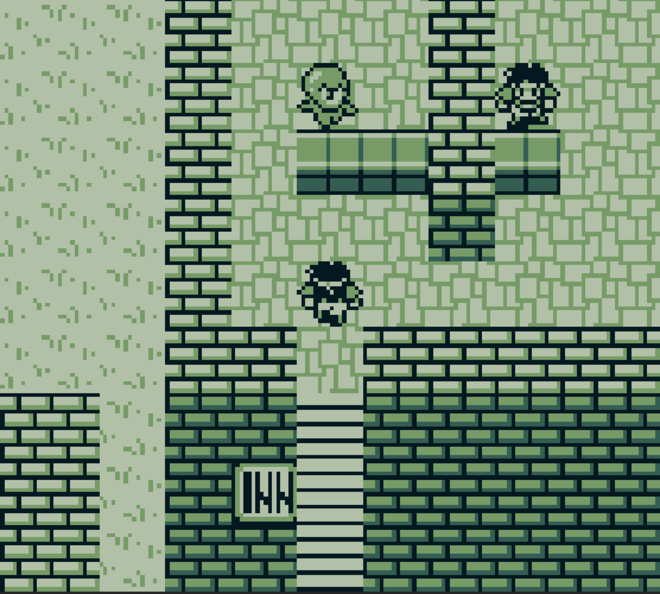
The structure of the game is simple: A central Tower links several Worlds which is a self-contained adventure with it’s own theme. The Tower levels that link the various worlds can be tough endurance-based dungeons requiring preparation and a bit of luck. The flip side is tough monsters are, of course, good for building up characters.
The game compares favorably to the original Final Fantasy in many ways. Both tended to limited dialog and had hard constraints on item names and such due to limited resources. For those who have read my Final Fantasy IV review, this game is before Square really broke through and started experimenting with storytelling. This is a game that takes some ideas from the Western style: The use of a ‘recruitment’ setup to gain PCs is very reminiscent of games like The Bard’s Tale where there was an expectation of an entire stable of characters being managed to some extent. It hearkens back to the Dungeons and Dragons ancestry of the game. At the same time some worlds do have minimal, but well-used, story-telling via NPCs. It is, at its core, a game of playing through several short stories where the player’s characters have no real way to show their motives.
Final Thoughts #
I re-played this on my iPhone and it’s a good port generally which also includes the two sequels that were also released on Game Boy. That said, this is a very simplistic game by modern standards and may be too crude and restricted for some people. It’s at the end of the era in which having a guide or map for certain dungeons was considered the norm: Specifically, the Tower levels that link the various worlds use repetitive level design with dead ends in a high-difficulty dungeon that could be frustrating to those unwilling to seek help .
The iOS version does work well for ‘quick play’ in that it can be used to grind or explore a bit while waiting in line or similar, but the lack of any reminders can mean that losing track of the plot is possible. Thankfully the structure is such that each world is a self-contained story and we’re not talking deep mysteries that msut be unraveled.
